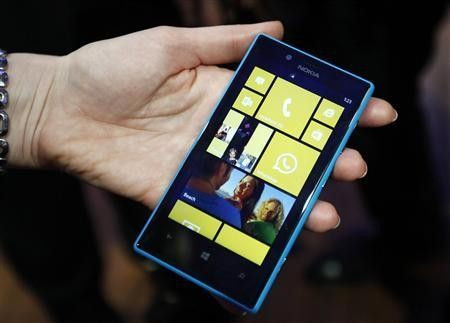Microsoft’s Windows Phone Devices To Gain Significant Market Share By 2018, While iOS And Android To Plunge Marginally, Says IDC

American market research firm International Data Corporation, a.k.a IDC, has disclosed the forecast report pertaining to the smartphone shipments targeting the next four years. Apparently, this new report is an amendment to the earlier one published in May 2014. This report showcases some interesting statistics on Windows Phone, Android and iOS based smartphones.
Nonetheless, readers are advised to consider the analysis and the report lightly as long-term predictions usually do not turn out to be as expected. Plus, predicting the growth for the next four years for an ever-changing tech and gadgets markets is questionable, says GSM Arena. But then, IDC is a market leader in analysing the market. Hence, there is nothing wrong in considering their perspective.
According to IDC's worldwide smartphone growth forecast, by 2018 Microsoft's Windows Phone will reportedly gain a 5.6 percent market share, which translates to a growth of 2.9 percent from its 2014 ranking. It was reported that in 2014 a total of 35 million devices running on Windows Phone have been sold thus far. On the other hand, the increase in Windows Phone sales will peak at a whopping 105 million in 2018, says IDC.
Moving on to the current market leaders Google's Android and Apple's iOS, IDC predicts that the numbers pertaining to the aforementioned operating systems will remain the same for the most part. But then, Android OS is believed to fall slightly from 82.3 percent market share clocked in 2014 to 80 percent by 2018. Apple's iOS market share, meanwhile, is expected to drop by just 1 percent. It is worth noting that Apple has sold a total of nearly 178 million iPhone units in 2014. By 2018, Apple will reportedly sell a staggering 240 million iPhone units. This entire analysis is based solely on the theory that the global smartphone shipments will improve from 1.288 billion units to 1.873 billion units by 2018.
The aforesaid wild assumptions in the name of research and analysis may or may not come true. This is predominantly because the baseline for these assumptions is rooted on the current market trend and hence the future variations in the trend cannot be dismissed, says the same site. Interested readers can check out the tabular column depicting the aforementioned numbers from IDC's website.
Also Read
1. Apple iPhone 7 Release Date Update: Apple Patent Shows 'Iron Man-Like Gas Thrusters' On Phone's Body For Protection From Freefall - [Read]
2. 'Samsung Galaxy Note 5' To Feature Samsung-Made GPU Plus New Concept Shows 6-Inch Display, 4K Resolution, 4GB RAM And More - [Read]
3. Google Nexus 6 Endures Underwater Torture Test Like A Pro, Even Without IP Rating [Watch Video] - [Read]




















